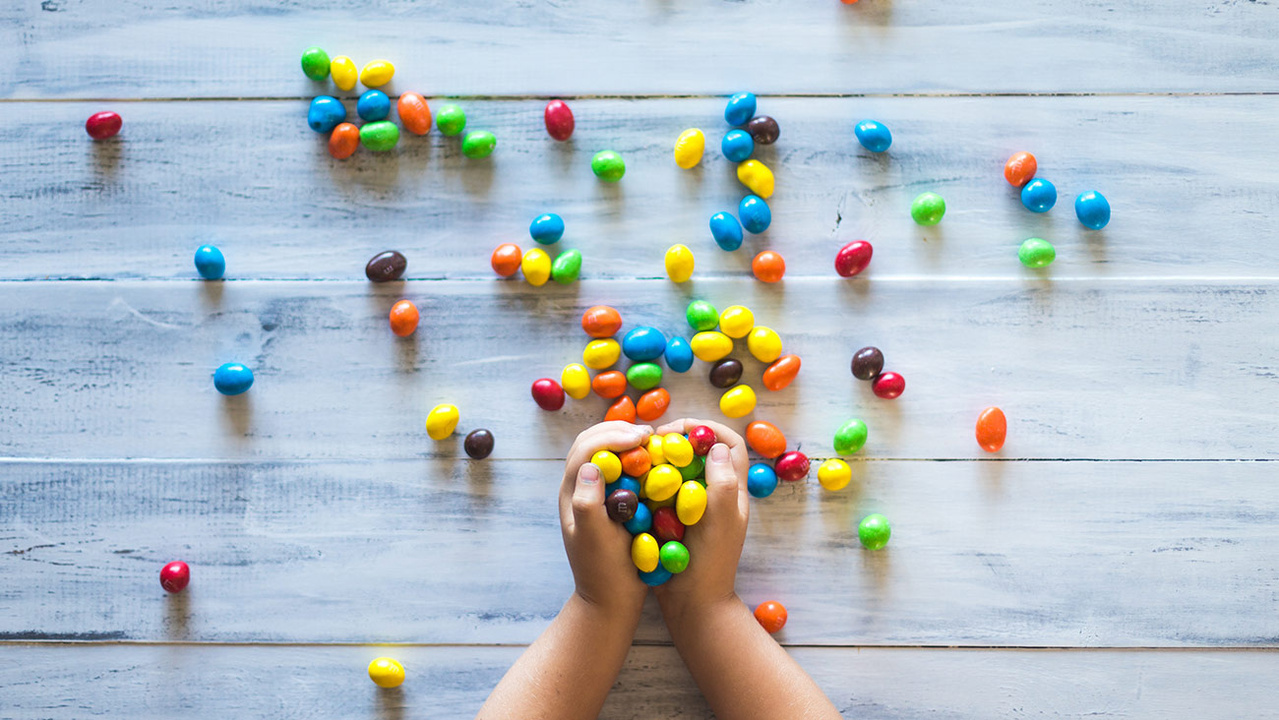How much sugar should you consume daily?
While you’re probably mindful of the amount of sugar you eat, do you know how much you should consume, and how to strike the right balance? Find out how much sugar is okay, what sugars you should limit, and to cut down your intake.
Try to limit your intake of free sugars, as a high intake has been associated with an increased risk of suffering from tooth decay and becoming overweight or obese.
What types of sugar should you limit?
Sugar is found in a wide range of food and drinks, but all forms of sugar can fit under one of two categories – a free sugar, or a naturally occurring sugar.
1. Naturally occurring sugars:
- Found naturally in foods and drinks that are beneficial to your diet, such as fresh whole fruit, vegetables, grains and plain milk products.
- There is no need to reduce your intake of these foods and drinks because of their natural sugar content.
- Naturally occurring sugars are often only found in small amounts and are almost always coupled with nutritious vitamins and minerals.
- As a general rule, aim to consume at least 3 servings of vegetables, 2-3 serves of milk or milk products and 2 portions of fruit every day.
2. Free sugars
- Can be found in any food or drink you buy or prepare that has added sugar , as well as sugars found in honey, syrups, fruit juices and fruit juice concentrates.
- Forms of free sugar include glucose, fructose, and sucrose – also known as table sugar.
- While table sugar is well-known, all free sugars, regardless of their source can be detrimental to health when consumed in excess. This includes coconut sugar, agave syrup, brown sugar, date sugar, corn syrup solids and rice malt syrup.
- Try to limit your intake of free sugars, as a high intake has been associated with an increased risk of suffering from tooth decay and becoming overweight or obese.
Other refined carbohydrates, such as maltodextrin and starches – while not strictly considered free sugars - are also sometimes added to foods and drinks. Unfortunately these also provide additional ‘empty calories’ and can quickly break down in your body in a similar way to free sugars.
How much sugar can you consume per day?
While there’s no need to place a limit on the amount of naturally occurring sugars, we should keep an eye on how much free sugar we consume. The World Health Organization recommends limiting the amount of free sugars we consume to less than 10% of total energy intake to reduce the risk of developing dental decay and becoming overweight or obese. For an adult, this is around 12 teaspoons per day, while an average 5 year old should be aiming for less than 9 teaspoons per day.
Limited evidence suggests that a further reduction to below 5% of total energy intake may be beneficial to help prevent tooth decay. For an average adult, this is equivalent to around 6 teaspoons of free sugars per day. For a 5 year old, this is less than 4 ½ teaspoons each day.
So while a high intake of free sugars can be detrimental to our health, the good news is that consuming a small amount of it, in the context of a healthy diet, is unlikely to cause harm. For example, including a serving of chocolate or ice cream into an overall healthy diet every now and then isn’t going to hurt – just make sure that when you do indulge occasionally, you enjoy it!
How to reduce your sugar intake
Most of us would like to reduce our sugar intake, whether that be drastically, or by a few teaspoons. Here are a few simple things you can do to start:
- Be mindful about the amount of sugar you might be adding to a meal or baking, and consider reducing the sugar you’re using. For example reduce some of the sugar you may add to a cake, and replace it with banana.
- Look out for store bought products that don’t contain added sugars. As a nutrition information panel will also include any naturally occurring sugars, a good way to check is to look at the ingredients list and see if any form of sugar is listed. Remember – the closer it is to the beginning of an ingredient list – the higher the chance of it being present in larger quantities. While ‘sugar’ may be easy to spot, be aware that other forms of free sugar may be listed in the ingredients list.
- Even fruit juices claiming to have no added sugar should be consumed in moderation. While the sugar found in fruit juice would have once originated from fruit, once it has been squeezed and processed into juice, it is considered a free sugar. Remember that it takes several oranges to make a glass of juice, so when you drink a glass, that’s actually quite a bit of sugar, with much less fibre!
- Be aware of where sugar can be found – it often comes as a surprise when people learn that certain food products like tomato sauce, baked beans, breakfast cereal and muesli bars all contain added sugars, which can add up very quickly in a day!
- When you’re purchasing store bought foods and drinks that have had sugar added to them, make sure you take the time to look for foods and drinks that contains the lowest percentage of sugar. You can do this by referring to the amount of sugar per 100g, and comparing it against other similar products. Also be mindful of the serving size of the product.
Suggestions to reduce the amount of free sugar in your diet:
| BREAKFAST |
| FOODS TYPICALLY CONTAINING FREE SUGAR |
ALTERNATIVES |
| ½ cup store-bought muesli with milk =1 ½ tsp free sugar |
2 wheat biscuits with banana and milk =Less than ¼ tsp free sugar |
| 2 Pancakes with 2 tsp maple syrup =2 ½ tsp free sugar |
2 Pancakes + ½ cup fresh strawberries=1 tsp free sugar |
| 2 slices toast with 1 Tbsp strawberry jam =2 tsp free sugar |
2 slices toast with 1 Tbsp Plain Peanut Butter =½ tsp free sugar |
| Glass of fruit juice =5 ½ tsp free sugar |
Glass of plain milk =0 tsp free sugar |
| LUNCH OR SNACKS |
| FOODS TYPICALLY CONTAINING FREE SUGAR |
ALTERNATIVES |
| 1 cup canned baked beans =2 tsp free sugar |
Cannellini beans with plain canned tomato, garlic and onion = no free sugar |
| Nut bar with yoghurt coating =2 tsp free sugar |
Cheese & 4 wholegrain crackers =Less than ¼ tsp free sugar |
| DESSERTS |
| ½ cup Hokey Pokey Ice cream =4 tsp free sugar | ½ cup thick, unsweetened Greek yoghurt with fruit = no free sugar |
| 1 small bar milk chocolate (50g) =6 ½ tsp free sugar |
1 small bar dark chocolate - 85% Cocoa (50g) =1 ½ tsp free sugar |

